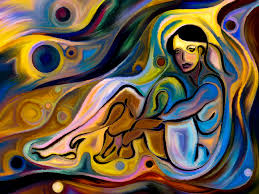
Creativity and Psychotherapy: Two Sides of the Same Coin
Having worked in the creative industry prior to becoming a psychotherapist, I have always been fascinated by the creative process. I entered the world of psychotherapy via a course on NLP, which is the study of how people structure their reality.
In NLP, personal development is: “a way to look at change…. What new capacities or abilities could I invent for myself?” (From 'Frogs into Princes')
This idea can not only help people therapeutically but can help people with their goals, aspirations and dreams. As a psychotherapist and trainer, I help my clients be more creative in all aspects of their life. I've worked with all kinds of people, from artists to accountants, musicians to business leaders. I have learnt that we all have the potential to tap into the creative parts of ourselves, and each person’s creative process is unique to them. Creativity can be taught and we are all capable of expanding our understanding of what it is to be creative.
The more I looked into creativity and the more I understood psychotherapy, I came to the conclusion that the psychotherapeutic process was in and of itself a process of exploring creativity. Louis Conzolino in his book The Neuroscience of Psychotherapy, defines the goal of psychotherapy as bringing into ‘conscious awareness our somatic, non-verbal, unconscious parts of ourselves.’
Both psychotherapy and creativity are also alike in that they both exist within relationships. Whether it is the relationship between the client and the therapist or an artist and their easel, both only exist as something that is neither fully within one or the other, rather they exist in the space between the two. Creativity and psychotherapy can both be seen as conversations, existing intra- and inter-personally at the same time.
The therapeutic tools available to a psychotherapist can inform creative work in the same same that creativity can influence and aid the psychotherapeutic approach. Clients will often present with ‘symptoms’ such as stress, anxiety or depression. I believe that the solution to the client’s problems exist within the client themselves, and my role is to provide a space for these dual conversations to play out and to hold a belief in the client’s potential for creative change. My role is to help facilitate these conversations.










